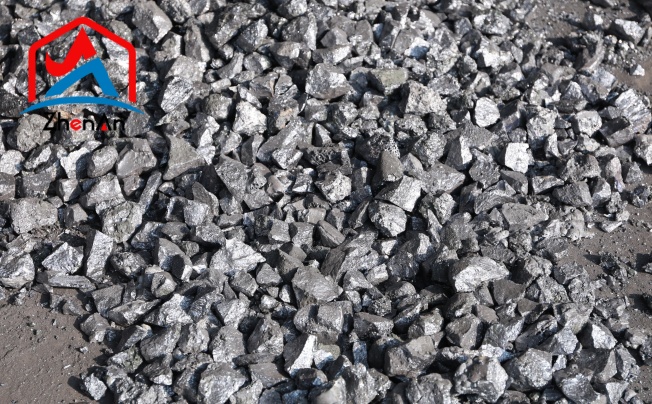Properties of Petroleum Coke
Petroleum coke, also known as pet coke, is a carbonaceous solid material derived from oil refining processes. Its composition varies depending on the crude oil source and refining techniques used.
Generally, petroleum coke consists mainly of carbon along with small amounts of sulfur, metals (such as vanadium and nickel), and other impurities. The chemical structure of pet coke is predominantly carbon atoms arranged in a layered structure similar to graphite, giving it high energy density and heat resistance.
One of the key advantages of petroleum coke is its high energy content and heating value compared to coal. Pet coke typically has a higher calorific value per unit mass than coal due to its higher carbon content.
This results in more efficient combustion and greater energy output when used as a fuel source. The heating value of petroleum coke can range from 30-35 MJ/kg, making it an attractive option for industries seeking high-energy fuels for various processes.
Petroleum coke generally has lower ash content than coal, which reduces the amount of residue left behind after combustion. The ash content in pet coke can vary depending on the refining process but is typically lower than that of coal.
Additionally, pet coke may contain impurities such as sulfur, vanadium, and nickel that can impact emissions and environmental considerations when burned as a fuel. Proper handling and processing methods are crucial to mitigate the effects of these impurities during combustion.
Comparison with Coal as a Fuel Source
Energy Efficiency and Combustion Characteristics
When comparing petroleum coke to coal as a fuel source, one key aspect to consider is their energy efficiency and combustion characteristics. Petroleum coke typically has a higher calorific value than coal, meaning it can produce more energy per unit of weight when burned.
This higher energy content can result in greater heat generation and improved efficiency in industrial processes. Additionally, petroleum coke tends to have lower moisture content than coal, leading to more efficient combustion and reduced emissions.
Environmental Impact and Emissions
In terms of environmental impact and emissions, the use of petroleum coke as a fuel source compared to coal presents both advantages and challenges. While petroleum coke generally contains fewer impurities, such as sulfur compared to coal, its combustion can still release pollutants into the atmosphere.
Emissions from burning petroleum coke may include sulfur oxides (SOx), nitrogen oxides (NOx), particulate matter, and greenhouse gases. Strategies such as implementing advanced emission control technologies are essential to mitigating these environmental concerns.
Cost Analysis and Availability
When conducting a cost analysis of using petroleum coke or coal as a fuel source, factors such as procurement costs, transportation expenses, storage requirements, and regulatory compliance must be taken into account. The availability of both fuels also plays a significant role in their cost-effectiveness. While coal reserves are widespread globally, the quality and accessibility of petroleum coke deposits vary by region.
Moreover, fluctuations in market prices for both fuels can influence the economic feasibility of switching between them. Consideration must also be given to any government policies or subsidies that could impact the affordability of using either fuel source in industrial operations.
Industrial Applications of Petroleum Coke vs Coal
The Steel Manufacturing Industry
In the steel manufacturing industry, both petroleum coke and coal play significant roles in the production process. While coal has traditionally been the primary fuel due to its abundance and relatively low cost, the steel industry is increasingly considering the use of petroleum coke as a viable alternative.
Petroleum coke offers higher heating values and lower ash content compared to coal, making it an attractive option for steelmakers aiming to enhance energy efficiency and reduce emissions. Transitioning to petroleum coke can lead to improved operational performance and environmental sustainability in steel plants.
The Cement Production Sector
Cement production is another sector where the debate between using petroleum coke or coal is prevalent. Cement plants require vast amounts of energy for processes such as clinker production and grinding, making fuel choice a crucial decision.
Petroleum Coke's higher calorific value and lower sulfur content make it an appealing option for cement manufacturers seeking cleaner energy sources. By incorporating petroleum coke into their fuel mix, cement producers can reduce greenhouse gas emissions and comply with stringent environmental regulations while maintaining efficient operations.
Power Generation Plants
Power generation plants have long relied on coal as a primary fuel source for electricity production. However, with growing concerns over carbon emissions and air quality, power utilities are exploring alternatives such as petroleum coke to diversify their energy mix.
Petroleum coke's superior heating value and lower impurities make it an attractive fuel choice for power plants aiming to enhance efficiency and reduce environmental impact. By adapting their combustion technologies to accommodate petroleum coke, power generation facilities can achieve cleaner operations while ensuring a reliable supply of electricity for consumers.
Future Prospects for Using Petroleum Coke as a Substitute for Coal
Research & Development Initiatives
The future of utilizing petroleum coke as a substitute for coal looks promising, thanks to ongoing research and development initiatives aimed at enhancing its efficiency and environmental sustainability. Researchers are focusing on optimizing the combustion processes of petroleum coke to extract maximum energy output while minimizing emissions.
Innovative technologies, such as fluidized bed combustion and gasification techniques, are being explored to improve the utilization of petroleum coke in various industrial applications. Additionally, studies are being conducted to understand the long-term effects of using petroleum coke as a fuel source on equipment performance and environmental impact.
Market Trends & Demand Forecast
Analyzing market trends and demand forecasts is crucial in determining the viability and growth potential of using petroleum coke as a substitute for coal. The global energy landscape is evolving rapidly, with an increasing emphasis on transitioning towards cleaner and more sustainable fuel alternatives.
As governments worldwide implement stricter regulations on emissions from traditional fossil fuels like coal, there is a growing demand for low-sulfur alternatives such as petroleum coke. Market analyses indicate a steady rise in the use of petroleum coke across industries like steel manufacturing, cement production, and power generation due to its cost-effectiveness and energy efficiency.
Potential Innovations in Utilization Techniques
Innovations in utilization techniques hold the key to unlocking the full potential of petroleum coke as a viable substitute for coal. Emerging technologies such as co-firing with biomass or natural gas offer new avenues for enhancing the performance of petroleum coke combustion while reducing greenhouse gas emissions.
Advanced control systems and monitoring tools are being developed to optimize the blending ratios of petroleum coke with other fuels based on real-time data analysis. Furthermore, novel approaches like carbon capture and storage (CCS) are being explored to mitigate the environmental footprint associated with using petroleum coke, paving the way for more sustainable energy practices in the future.






